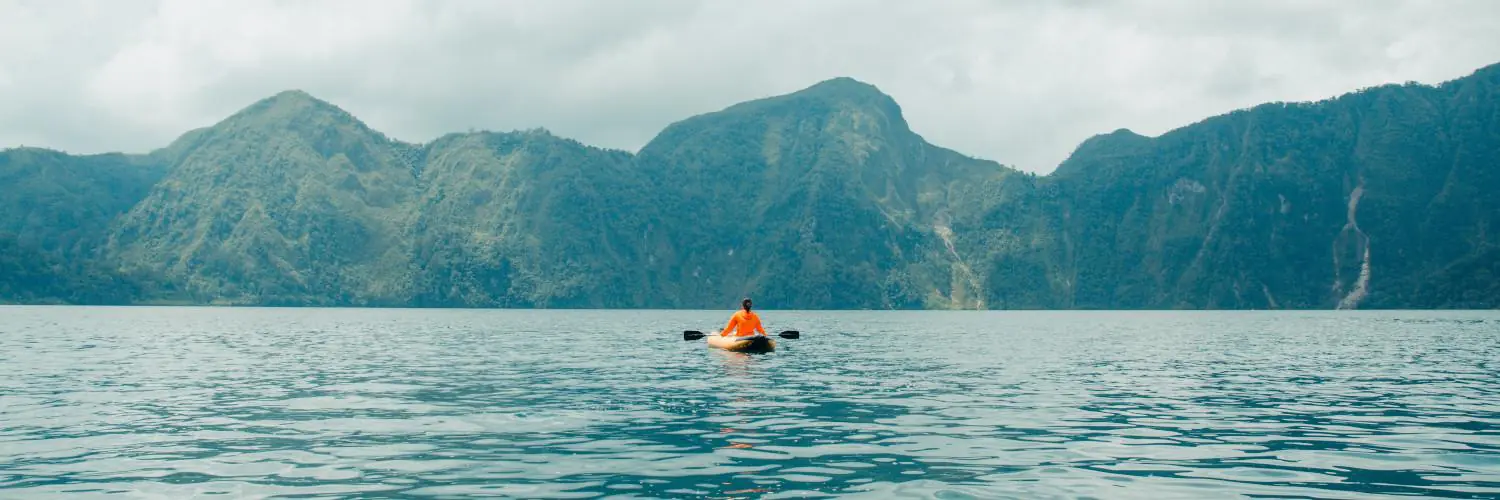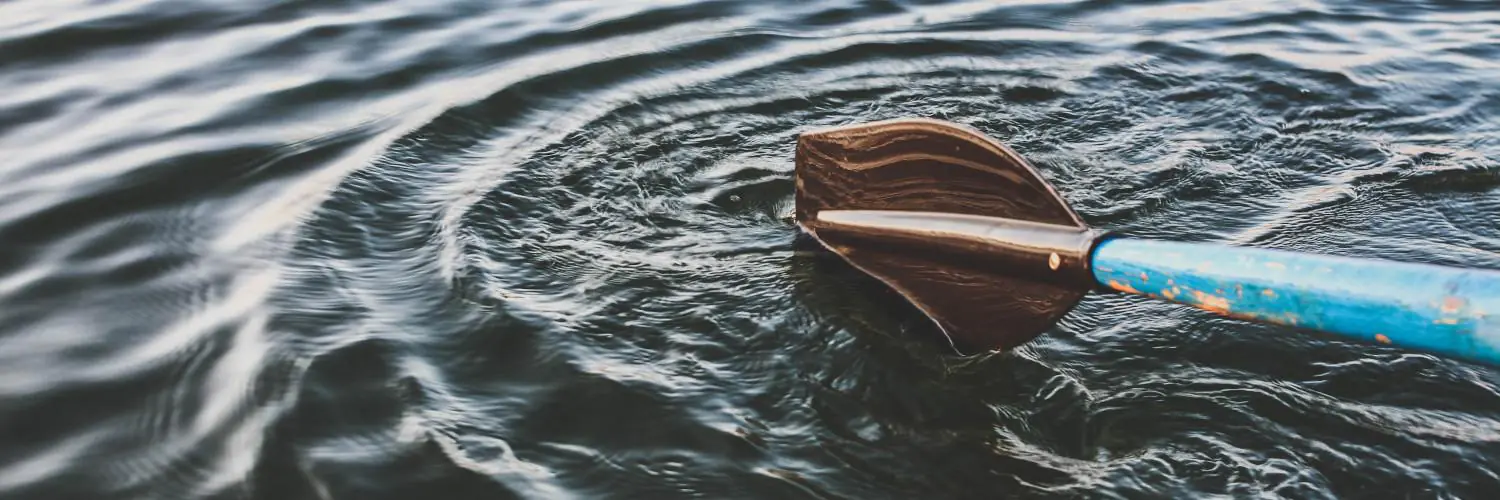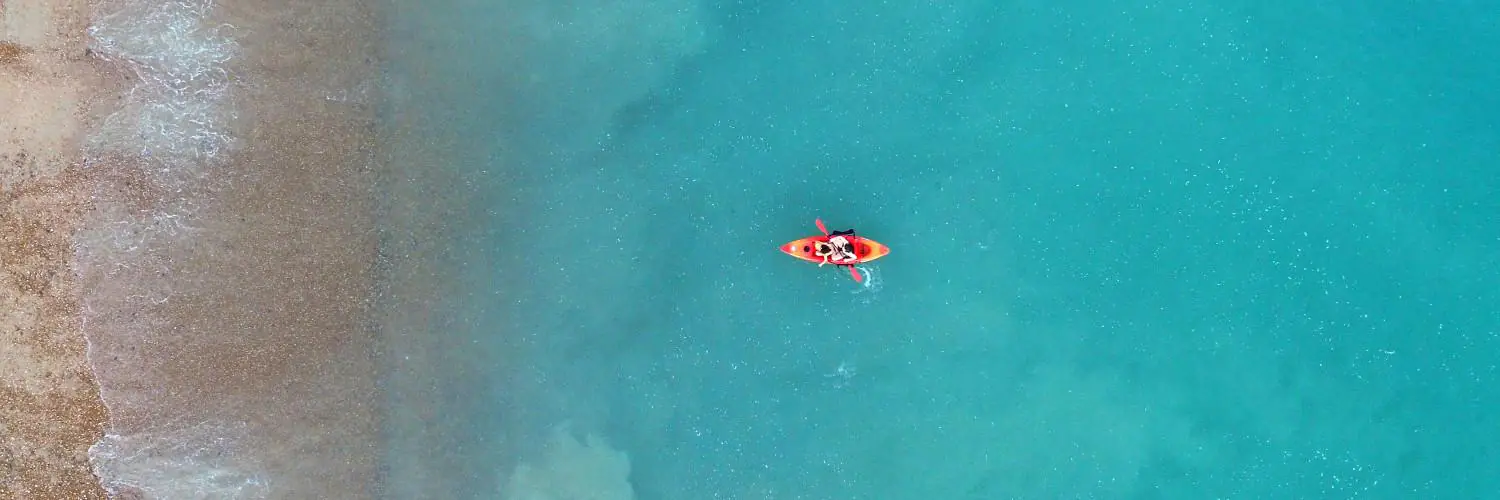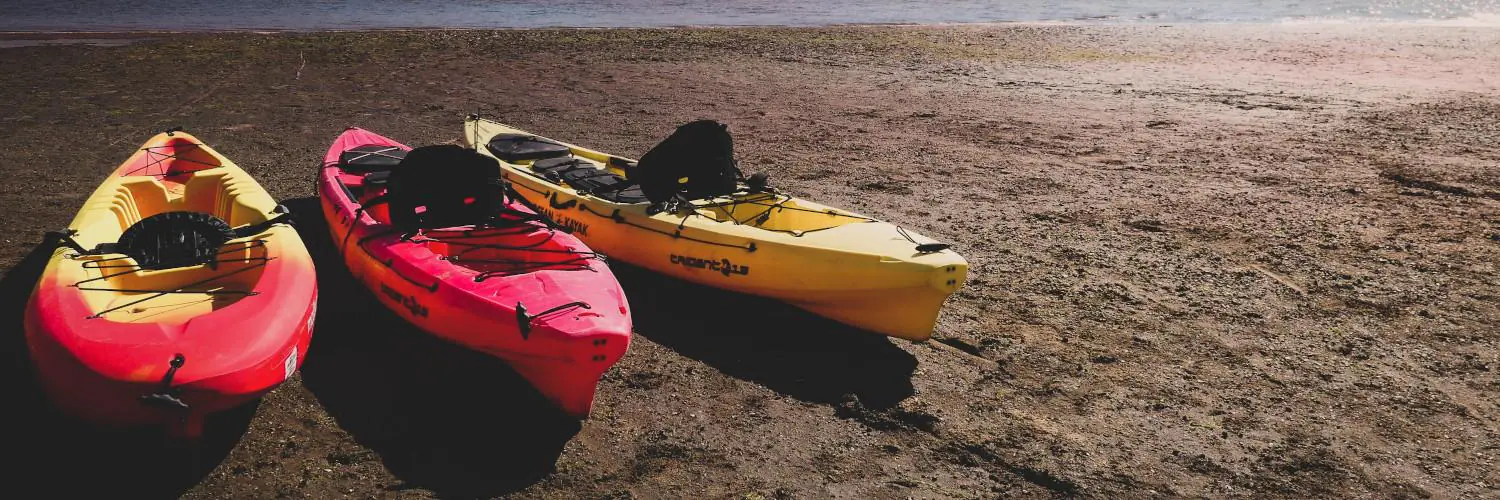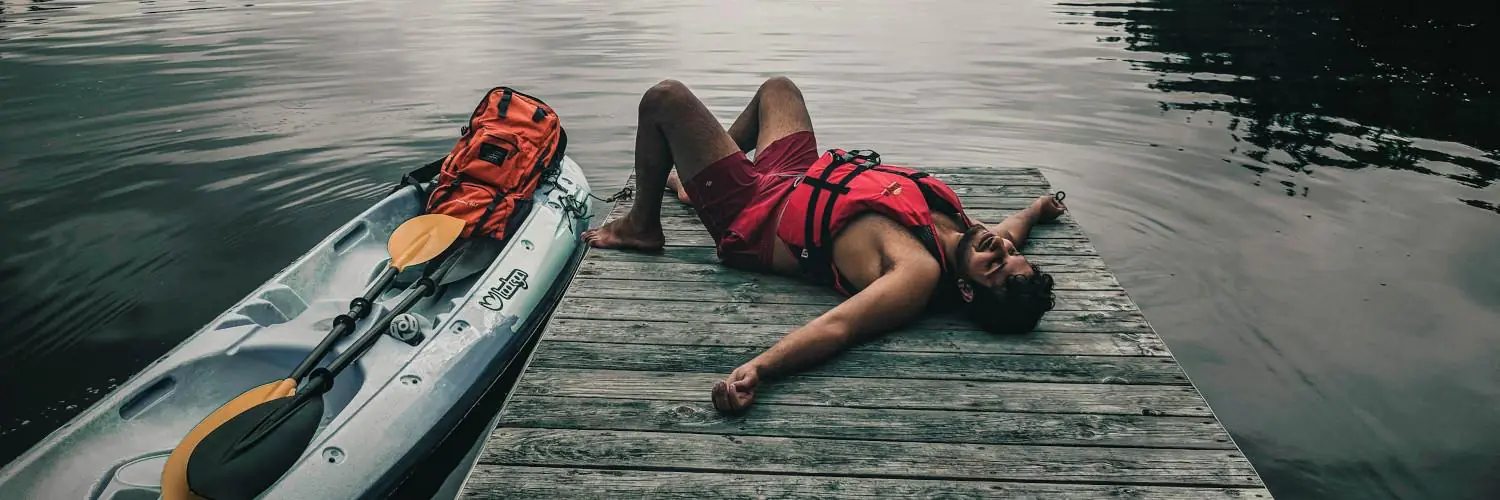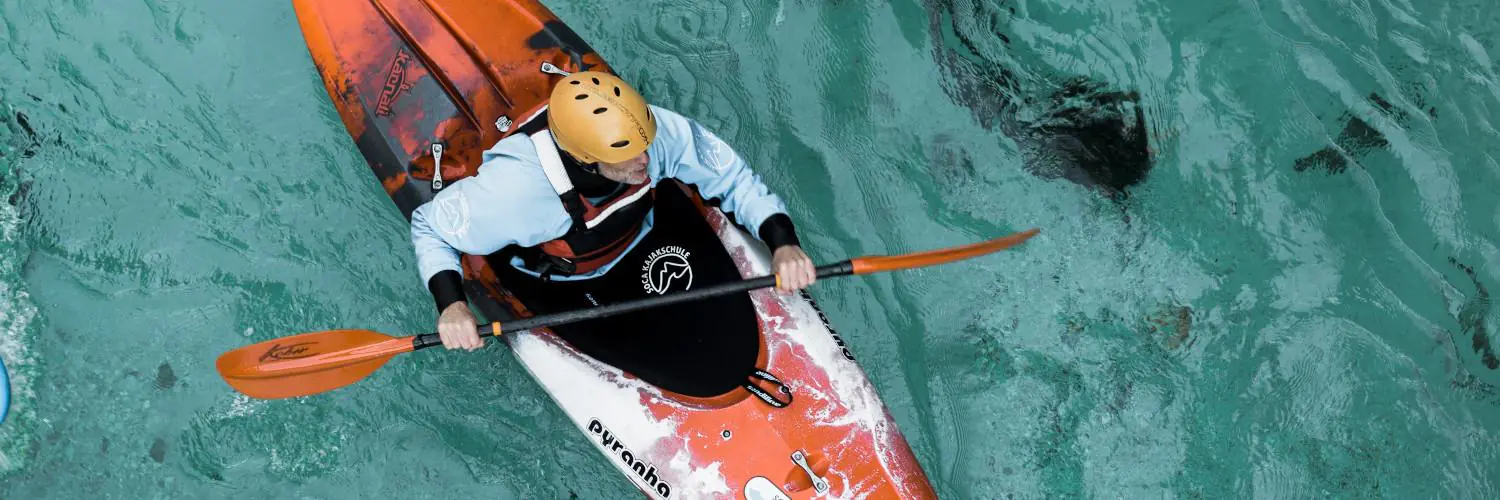A dramatic video circulated online showing two women in a kayak seemingly swallowed by a humpback whale off the coast of California. The footage sparked concern and amazement among viewers.
The video does not show the women being eaten by the whale. Instead, it captures a close encounter where the whale surfaced near their kayak, briefly knocking them into the water. The women were unharmed and quickly rescued by nearby boaters.
This incident highlights the unpredictable nature of whale watching from small watercraft. While humpback whales are not known to intentionally harm humans, their large size and sudden movements can pose risks to kayakers and boaters in their vicinity.
Table of Contents
The Basics of Kayaking in Whale Habitats
Kayaking in whale habitats requires specific knowledge and skills. Safe and respectful whale watching from a kayak depends on understanding both the equipment and the animals.
Kayak Features and Designs
Kayaks for whale watching should be stable and seaworthy. Sit-on-top kayaks are good choices. They’re easy to get back on if you fall off.
Kayaks should be brightly colored. This helps whales see them. It also helps rescue teams spot kayakers if needed.
A kayak for whale watching needs storage space. Bring safety gear like flares and a first aid kit. Pack water and snacks too.
Paddle leashes keep paddles from floating away. They’re very useful in open water.
Understanding Humpback Whale Behavior
Humpback whales are known for breaching. This is when they jump out of the water. It’s amazing to see, but can be risky for kayakers.
Whales often feed near the surface. They open their mouths wide to catch fish. This can accidentally catch kayaks too.
Humpbacks make loud noises called songs. Kayakers might hear these underwater sounds.
Whales can be curious about boats. They might swim close to look. Stay calm if this happens.
Always keep a safe distance from whales. It’s best for both the whales and kayakers.
Incidents of Whale and Kayak Interactions
Whale and kayak encounters have occurred in various locations, ranging from surprising to potentially dangerous. These events highlight the need for safety measures when kayaking in whale habitats.
Historical Accounts
In November 2020, a notable incident took place in California’s San Luis Obispo Bay. Two women in a yellow kayak had a close encounter with a humpback whale. The whale surfaced beneath their kayak, briefly lifting it out of the water.
The event was caught on camera by nearby paddlers. Videos show the kayak and its occupants appearing to be engulfed by the whale’s mouth. However, this was just an illusion caused by the whale’s sudden emergence.
Julie McSorley and Liz Cottriel, the women involved, described the experience as happening too fast to fully process. They were watching whales feed on silverfish when the surprising breach occurred.
Safety and Precautions
Kayakers in whale-watching areas should stay alert and maintain a safe distance from marine life. Experts suggest keeping at least 100 yards away from whales to avoid disturbing them or risking collisions.
Bright-colored kayaks, like yellow, can increase visibility to both whales and other boaters. Paddlers should also wear life jackets and carry safety gear such as whistles or flares.
Group kayaking is safer than going alone. It’s wise to check local wildlife reports and weather conditions before heading out. If whales are spotted nearby, remain calm and avoid making sudden movements that might startle them.
Specific Case: Encounter at Avila Beach
In 2020, two women kayaking off Avila Beach, California had a close encounter with a humpback whale. The incident gained attention due to its rarity and the dramatic footage captured.
Detailed Event Breakdown
Julie McSorley and Liz Cottriel went kayaking to watch humpback whales during feeding season. They paddled out from Avila Beach, hoping to see the giant mammals up close.
Suddenly, a massive humpback whale surfaced near their kayak. The whale’s open mouth came frighteningly close to the small boat. For a moment, it seemed like the whale might swallow the kayakers.
The two women were briefly pulled underwater. Luckily, they resurfaced quickly and were unharmed. Other nearby paddlers helped them get back to shore safely.
Video of the incident shows the whale’s huge mouth rising out of the water next to the kayak. The footage looks scary, but experts say the whale likely didn’t mean to approach so closely.
Fox 26 News Coverage
Fox 26 News reported on this unusual whale encounter. They interviewed McSorley and Cottriel about their experience. The women described feeling scared but also amazed by the close-up view of the whale.
The news report showed the viral video footage. It explained that humpback whales often feed near the California coast. Experts noted that whale-watching can be risky if people get too close.
Fox 26 reminded viewers to keep a safe distance from whales. They stressed that the Avila Beach incident was very rare. The report helped spread awareness about responsible whale watching practices.
Conservation and Public Awareness
Whale watching and kayaking can impact marine ecosystems. Responsible practices help protect whales and their habitats. Education plays a key role in conservation efforts.
Role of Kayakers in Conservation
Kayakers can help protect whales and their ocean homes. They can report whale sightings to research groups. This data helps scientists track whale populations and movements.
Kayakers should follow rules to avoid disturbing whales. Keeping a safe distance prevents stress on the animals. It also reduces the risk of accidents.
Many kayakers pick up trash they see in the water. This simple act helps keep the ocean clean for whales and other sea life. Some kayak groups organize beach cleanups too.
Promoting Responsible Whale Watching
Whale watching can teach people about these amazing animals. But it needs to be done safely. Tour operators should follow guidelines to protect whales.
Boats must stay a certain distance from whales. This gives the animals space to swim and feed without stress. Whale watch captains should turn off engines when near whales.
Whale watchers can learn to spot signs of whale distress. If a whale seems upset, boats should back away. Good whale watching practices help ensure these animals can thrive in their natural homes.
Education is key for whale conservation. Tour guides can teach guests about whale biology and behavior. This knowledge helps people care more about protecting whales and oceans.
Understanding Marine Ecology
The ocean is home to complex food webs and feeding behaviors. Whales play a key role in these systems. Their actions impact many other species.
The Significance of Bait Balls
Bait balls are dense groups of small fish. They form when predators attack. The fish bunch together for safety. This makes it harder for predators to single out one fish.
Humpback whales love bait balls. They swim through them with open mouths. This lets them catch lots of fish at once. Whales can eat up to 3,000 pounds of fish per day.
Bait balls attract other animals too. Seabirds dive for fish from above. Larger fish attack from below. This creates a feeding frenzy with the bait ball at the center.
The Marine Food Web
The ocean food web starts with tiny plants called phytoplankton. Small fish eat these plants. Bigger fish eat the smaller fish. Whales are at the top of this chain.
Humpback whales mainly eat small fish and krill. Their huge mouths can hold up to 5,000 gallons of water and fish. They push the water out through their baleen plates. This traps the fish inside.
Whales help keep fish populations in check. When whale numbers drop, it can throw off the whole system. Too many small fish can eat up all the plankton. This leaves less food for other ocean life.
Human activities can upset this balance. Overfishing and pollution harm many ocean species. Protecting whales and their food sources helps keep the whole ecosystem healthy.

